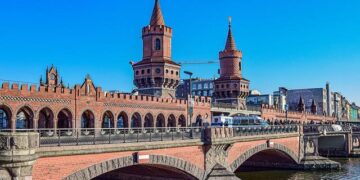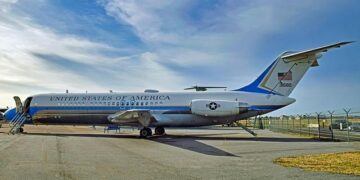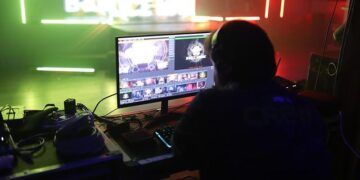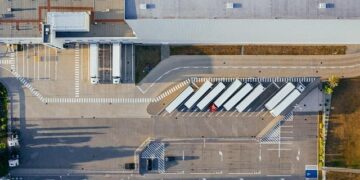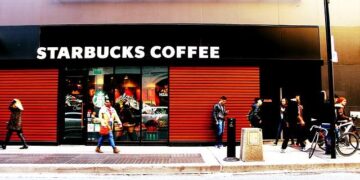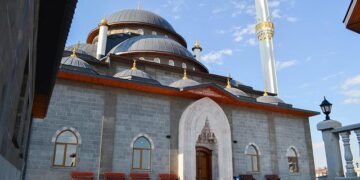Nestled just outside Boulder, a remarkable 476-acre tract of land is poised to become a beacon for innovation, blending cutting-edge science, sustainability, and the arts. In an exclusive opinion piece, Katharine Suding explores how this unique parcel offers unprecedented opportunities to foster interdisciplinary collaboration, drive environmental stewardship, and enrich the local community. As Boulder continues to position itself at the forefront of progressive thinking, this expansive site stands as a testament to the region’s commitment to a future where nature, knowledge, and creativity intersect.
Opportunity Knocks on 476 Acres Near Boulder for Interdisciplinary Innovation
The expansive 476-acre site near Boulder presents a rare canvas for pioneering a new kind of collaborative hub, where science, sustainability, and the arts intersect. Envisioned as more than just a development project, this space holds the promise of fostering innovation that transcends traditional boundaries. With the pressing challenges of climate change and resource management, the potential for this land to serve as a living laboratory is immense, offering opportunities to test cutting-edge research, implement green infrastructure, and inspire creative expressions that reflect environmental stewardship.
Key features that make this site particularly compelling include:
- Strategic Location: Proximity to leading universities and tech centers in Boulder ensures a steady influx of talent and ideas.
- Multidisciplinary Potential: Spaces designed for experimental ecosystems, art installations, and community engagement.
- Commitment to Sustainability: Planned integration of renewable energy sources and zero-waste principles.
| Aspect | Potential Impact | Stakeholders |
|---|---|---|
| Scientific Research | Advancing climate resilience | Universities, Startups |
| Sustainability Initiatives | Modeling carbon-neutral living | Environmental Groups, Local Government |
| Arts & Culture | Community engagement & inspiration | Artists, Residents |
Integrating Science Sustainability and the Arts to Foster Community Engagement
Nestled near Boulder, a remarkable 476-acre plot is rapidly evolving into a vibrant nexus where scientific innovation, sustainable practices, and artistic expression converge. This initiative champions a holistic approach, recognizing that community engagement thrives when multiple disciplines interact and inspire one another. By fostering collaborations between ecologists, engineers, artists, and local residents, the space is designed to serve as a living laboratory and cultural hub – a place where ecological restoration projects coexist seamlessly with public art installations and educational programs. Such integration not only enriches the community’s connection to the land but also sparks creative solutions to environmental challenges.
This dynamic project emphasizes key pillars that drive its impact:
- Collaborative research bridging environmental science with creative arts.
- Sustainable infrastructure that models innovative practices for energy and resource use.
- Public engagement through workshops, exhibitions, and citizen science opportunities.
- Cultural inclusivity ensuring diverse voices contribute to the narrative.
| Focus Area | Example Activity | Community Benefit |
|---|---|---|
| Science | Soil health monitoring | Improved local ecosystems |
| Sustainability | Solar-powered pavilions | Reduced carbon footprint |
| Arts | Interactive sculptures | Enhanced cultural awareness |
Together, these elements form a living blueprint for communities seeking to harmonize innovation, environmental stewardship, and artistic creativity.
Strategies for Maximizing Impact and Ensuring Long-Term Stewardship
Maximizing the potential of this unique land requires a multifaceted approach that integrates scientific research, creative expression, and community engagement. Key to this effort is fostering partnerships that span local universities, conservation organizations, and artists’ collectives. These alliances not only leverage regional expertise but also ensure that initiatives are rooted in shared goals of sustainability and education. Adaptive management practices will be crucial – allowing projects to evolve in response to ecological feedback and community needs over time.
Long-term stewardship depends on establishing clear governance frameworks and ongoing funding models that promote transparency and accountability. Below is a strategic framework outlining core focus areas and actionable steps:
| Focus Area | Key Actions | Expected Outcomes |
|---|---|---|
| Collaborative Research | Form science advisory board; encourage interdisciplinary projects | Innovative solutions; increased grant opportunities |
| Community Engagement | Host workshops and open studios; create volunteer programs | Strong local support; educational outreach |
| Financial Sustainability | Develop income streams via events and partnerships; apply for endowments | Stable funding; reduced dependency on short-term grants |
| Environmental Stewardship | Implement habitat restoration; monitor biodiversity | Resilient ecosystems; enhanced conservation value |
- Empower local voices through advisory committees and leadership roles to maintain relevance and responsiveness.
- Invest in technology for real-time data collection and public accessibility.
- Promote creativity as a powerful tool for raising awareness and inspiring stewardship across diverse audiences.
The Way Forward
As Boulder continues to grow and evolve, the 476-acre tract near the city presents a rare opportunity to advance research, sustainability, and cultural innovation in tandem. Katharine Suding’s vision underscores the potential for science and the arts to intersect in ways that benefit both the environment and the community. How this land is developed will likely serve as a bellwether for Boulder’s commitment to integrating ecological stewardship with creative and educational pursuits in the years ahead.

